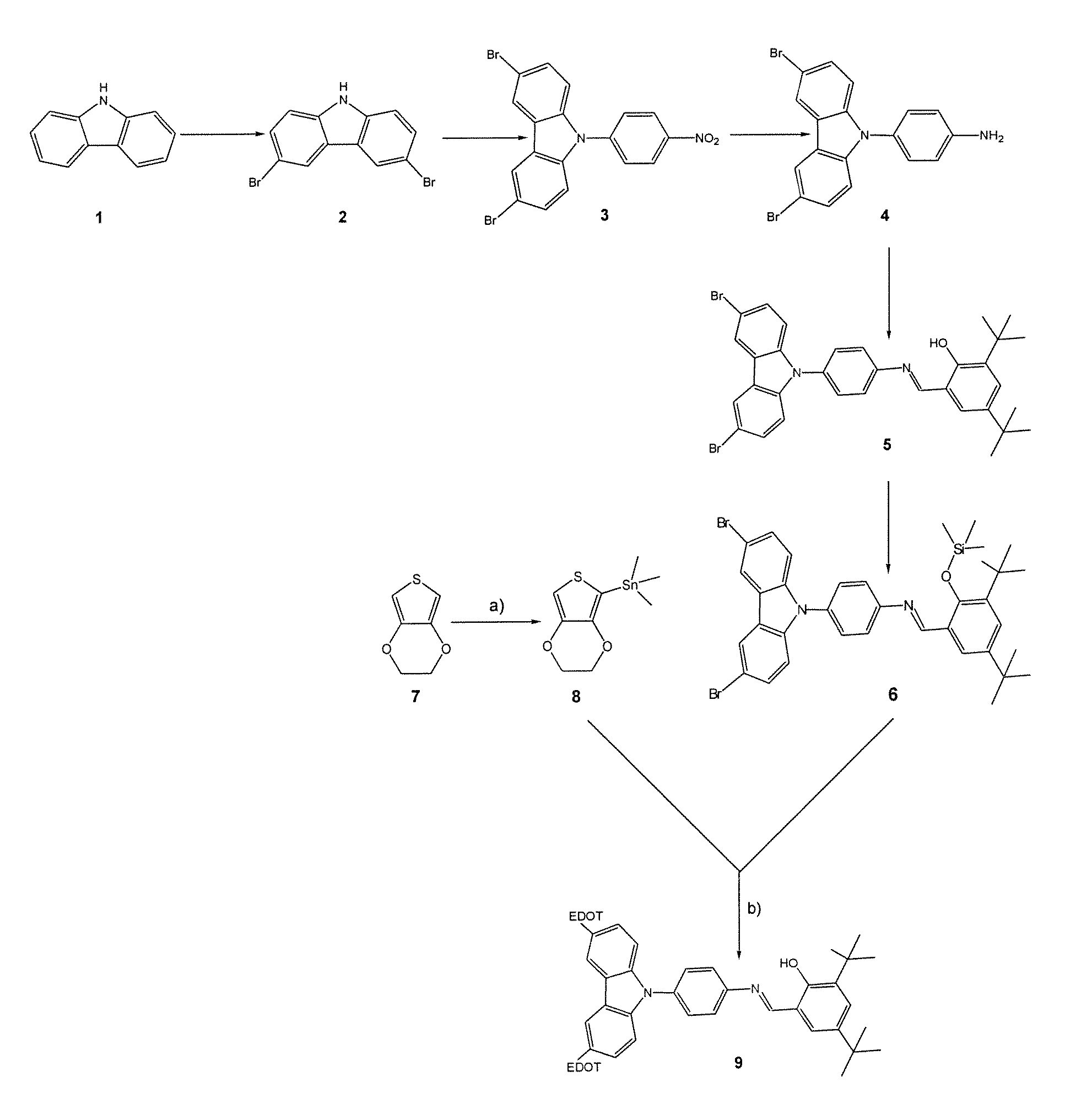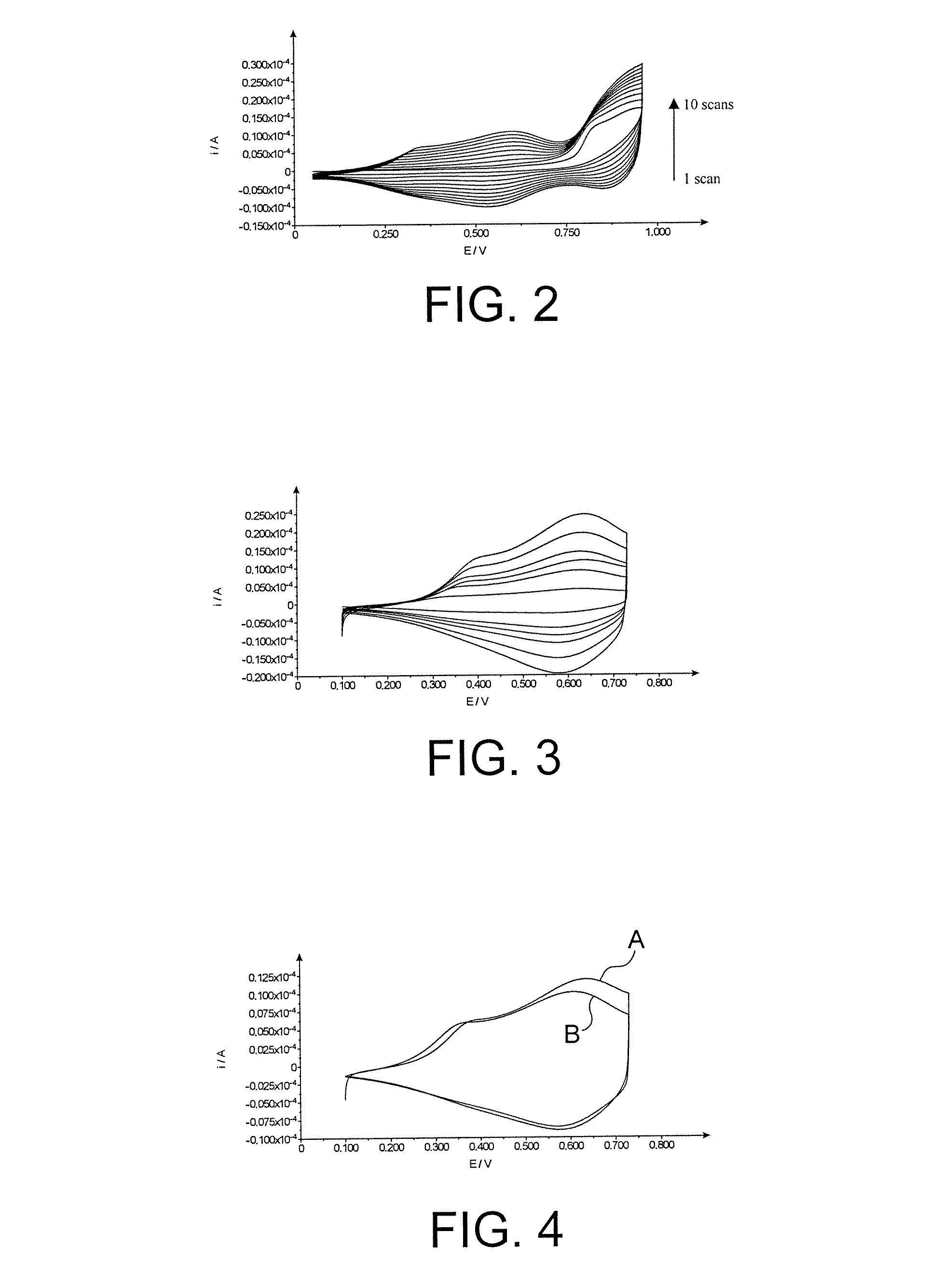Monomer of the "push-pull" type and photochromic electroconducting polymer material obtained from this monomer
- Summary
- Abstract
- Description
- Claims
- Application Information
AI Technical Summary
Benefits of technology
Problems solved by technology
Method used
Image
Examples
example 1
Synthesis of a Compound According to the Invention
[0048]The compound responding to formula (VI) above, which was referenced 9 on FIG. 1, was synthesized according to the reaction scheme illustrated on this figure from two commercially available compounds: carbazole or compound 1 on the one hand, and 3,4-ethylenedioxy-thiophene or compound 7 on the other hand.
Synthesis of Compound 2:
[0049]Compound 2 was obtained by dibromination of compound 1.
[0050]This dibromination was carried out by making this compound (2.01 g, 12.0 mmol) react with N-succinimide (4.20 g, 23.8 mmol), in the presence of silica preactivated at 120° C. (40.50 g, 0.063-0.2 nm) in order to protonate the nitrogen atom of compound 1, and in dichloromethane (350 ml), as described by Smith et al. in Tetrahedron, 1992, 48, 36, 7479-7488, [4].
[0051]The yield of the reaction was 76%.
Synthesis of Compound 3:
[0052]Compound 3 was obtained by coupling compound 2 with 4-fluoronitrobenzene.
[0053]This coupling was carried out by ma...
example 2
Synthesis of a Polymer Film According to the Invention
[0070]A polymer film according to the invention was prepared by electropolymerization of compound 9 as obtained in Example 1 above.
[0071]This electropolymerization was carried out by cyclic voltammetry, in a medium comprising the compound 9 at a concentration of 1.0 mmol / l, tetrabutylammonium-perchlorate as the electrolyte, at a concentration of 0.1 mol / l, and acetonitrile as the solvent.
[0072]The working electrode and the counter electrode were made of platinum, while the reference electrode was a Ag / AgCl electrode.
[0073]The operating parameters were the following ones:[0074]reaction potential: 0.05-0.96 V[0075]sweep rate: 0.05 V / s[0076]number of scans: 10.
[0077]In FIG. 2, which corresponds to the voltammogram obtained during this electropolymerization, it is possible to see the growth of the polymer and the formation of new waves that are characteristic of this.
[0078]Thus the formation of a coloured (yellow / green) polymer film ...
PUM
 Login to View More
Login to View More Abstract
Description
Claims
Application Information
 Login to View More
Login to View More - R&D Engineer
- R&D Manager
- IP Professional
- Industry Leading Data Capabilities
- Powerful AI technology
- Patent DNA Extraction
Browse by: Latest US Patents, China's latest patents, Technical Efficacy Thesaurus, Application Domain, Technology Topic, Popular Technical Reports.
© 2024 PatSnap. All rights reserved.Legal|Privacy policy|Modern Slavery Act Transparency Statement|Sitemap|About US| Contact US: help@patsnap.com










